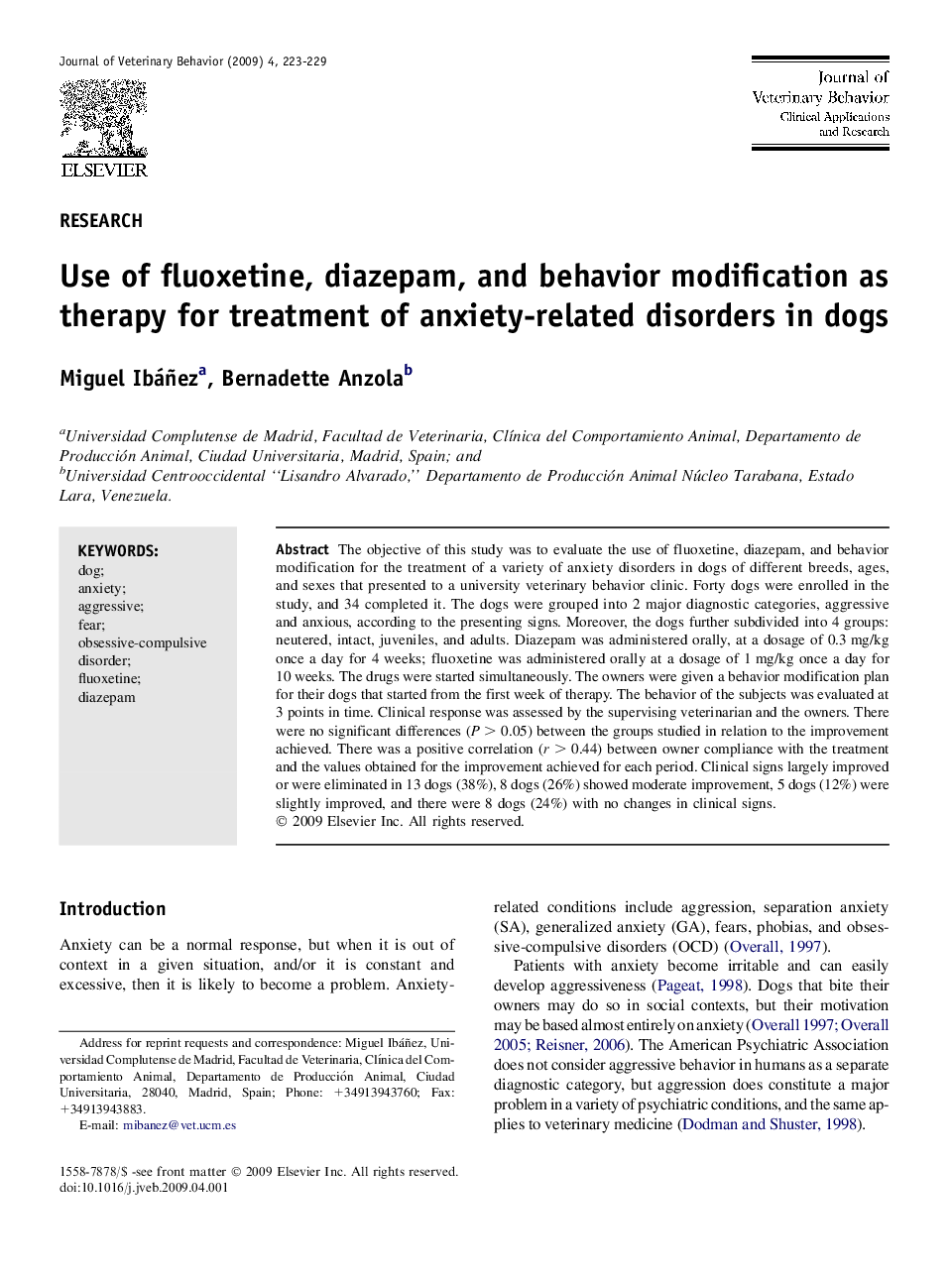| کد مقاله | کد نشریه | سال انتشار | مقاله انگلیسی | نسخه تمام متن |
|---|---|---|---|---|
| 2399628 | 1102048 | 2009 | 7 صفحه PDF | دانلود رایگان |

The objective of this study was to evaluate the use of fluoxetine, diazepam, and behavior modification for the treatment of a variety of anxiety disorders in dogs of different breeds, ages, and sexes that presented to a university veterinary behavior clinic. Forty dogs were enrolled in the study, and 34 completed it. The dogs were grouped into 2 major diagnostic categories, aggressive and anxious, according to the presenting signs. Moreover, the dogs further subdivided into 4 groups: neutered, intact, juveniles, and adults. Diazepam was administered orally, at a dosage of 0.3 mg/kg once a day for 4 weeks; fluoxetine was administered orally at a dosage of 1 mg/kg once a day for 10 weeks. The drugs were started simultaneously. The owners were given a behavior modification plan for their dogs that started from the first week of therapy. The behavior of the subjects was evaluated at 3 points in time. Clinical response was assessed by the supervising veterinarian and the owners. There were no significant differences (P > 0.05) between the groups studied in relation to the improvement achieved. There was a positive correlation (r > 0.44) between owner compliance with the treatment and the values obtained for the improvement achieved for each period. Clinical signs largely improved or were eliminated in 13 dogs (38%), 8 dogs (26%) showed moderate improvement, 5 dogs (12%) were slightly improved, and there were 8 dogs (24%) with no changes in clinical signs.
Journal: Journal of Veterinary Behavior: Clinical Applications and Research - Volume 4, Issue 6, November–December 2009, Pages 223–229